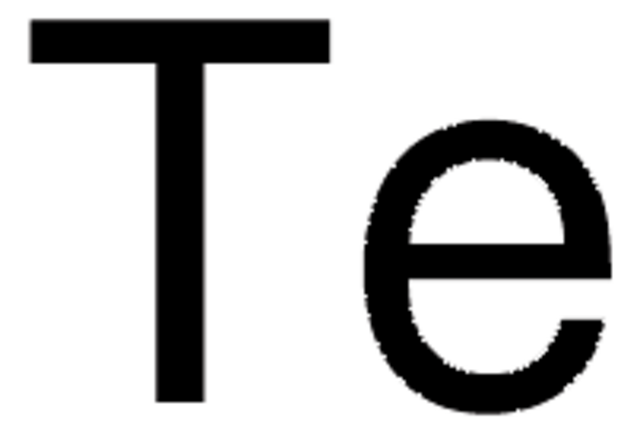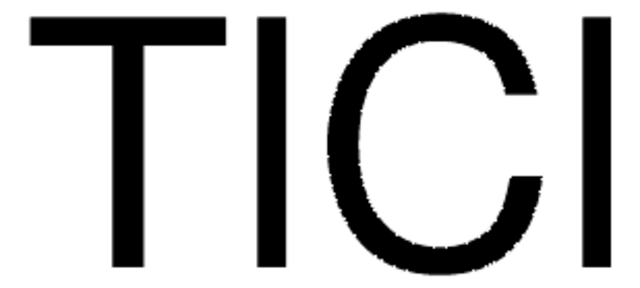205338
Tellurtetrachlorid
99%
Synonym(e):
Tellurium chloride, Tellurium(IV) chloride, Tetrachlorotellurium
About This Item
Empfohlene Produkte
Qualitätsniveau
Assay
99%
Form
powder, crystals or chunks
bp
380 °C (lit.)
mp (Schmelzpunkt)
224 °C (lit.)
Dichte
3.26 g/mL at 25 °C (lit.)
SMILES String
Cl[Te](Cl)(Cl)Cl
InChI
1S/Cl4Te/c1-5(2,3)4
InChIKey
SWLJJEFSPJCUBD-UHFFFAOYSA-N
Suchen Sie nach ähnlichen Produkten? Aufrufen Leitfaden zum Produktvergleich
Allgemeine Beschreibung
Anwendung
- Highly efficient regioselective synthesis of organotellurium compounds: Explores the reactions of Tellurium Tetrachloride with 1-alkenes, highlighting its utility in organic synthesis (VA Potapov et al., 2017).
- Cyclization Reactions: TeCl4 acts as a bis-electrophile in double-electrophilic cyclization reactions, demonstrating its versatility in organic transformations (N Korol, M Slivka, 2018).
- Regio-and stereoselective addition of tellurium tetrachloride: Investigates the addition of TeCl4 to methyl propargyl ether, emphasizing the stereochemistry of the addition process (MV Musalova et al., 2017).
Signalwort
Danger
H-Sätze
Gefahreneinstufungen
Skin Corr. 1B
Lagerklassenschlüssel
8A - Combustible corrosive hazardous materials
WGK
WGK 3
Flammpunkt (°F)
Not applicable
Flammpunkt (°C)
Not applicable
Persönliche Schutzausrüstung
Eyeshields, Faceshields, Gloves, type P3 (EN 143) respirator cartridges
Hier finden Sie alle aktuellen Versionen:
Besitzen Sie dieses Produkt bereits?
In der Dokumentenbibliothek finden Sie die Dokumentation zu den Produkten, die Sie kürzlich erworben haben.
Kunden haben sich ebenfalls angesehen
Artikel
High Purity Metalorganic Precursors for CPV Device Fabrication
Unser Team von Wissenschaftlern verfügt über Erfahrung in allen Forschungsbereichen einschließlich Life Science, Materialwissenschaften, chemischer Synthese, Chromatographie, Analytik und vielen mehr..
Setzen Sie sich mit dem technischen Dienst in Verbindung.







